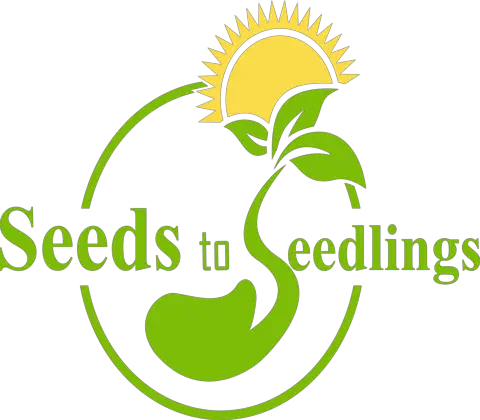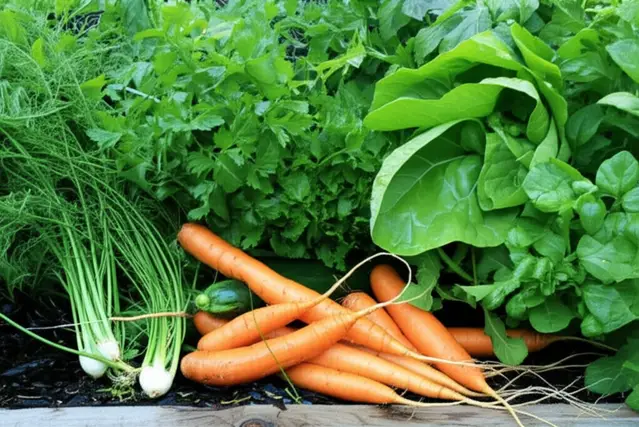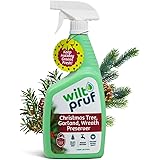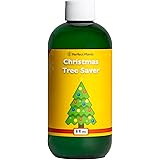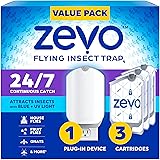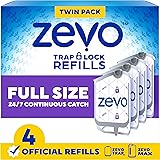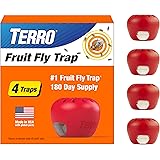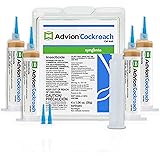Dreaming of a lush vegetable garden but only have a rainy ledge to work with? Don’t despair! Many vegetables actually thrive in consistently moist conditions, making your ledge a potential green paradise.
This comprehensive guide will explore the best vegetables for a rainy ledge, providing tips and tricks to ensure a bountiful harvest, even when the weather isn’t always on your side.
Understanding Your Rainy Ledge Environment
Before diving into specific vegetable choices, it’s crucial to understand the unique characteristics of your rainy ledge. Consider these factors:
- Sunlight: How many hours of direct sunlight does your ledge receive daily? While some vegetables tolerate shade, most need at least 4-6 hours of sunlight for optimal growth.
- Drainage: Even though it’s a rainy ledge, good drainage is essential to prevent waterlogging, which can lead to root rot.
- Wind Exposure: Is your ledge exposed to strong winds? This can dry out plants quickly and damage delicate foliage.
- Space Constraints: Consider the size and weight capacity of your ledge. Choose vegetables that are suitable for container gardening and won’t become too heavy when fully grown.
Preparing Your Rainy Ledge Garden
Proper preparation is key to a successful rainy ledge garden. Here’s what you need to do:
Choosing the Right Containers
Select containers that are appropriate for the size of the vegetables you plan to grow. Ensure they have adequate drainage holes. Terracotta pots are breathable but may dry out faster. Plastic pots retain moisture better, which can be beneficial in a rainy environment. Consider using self-watering containers to regulate moisture levels. You might even consider repurposing items; for example, you might ask yourself, “how to grow dill in a chipped bowl’?
Selecting the Best Soil
Use a high-quality potting mix designed for container gardening. This type of soil is lightweight, well-draining, and contains essential nutrients. Avoid using garden soil, as it can become compacted and impede drainage in containers. The best soil for your plants depends on the variety; for example, consider using the best soil for propagating snake plants.
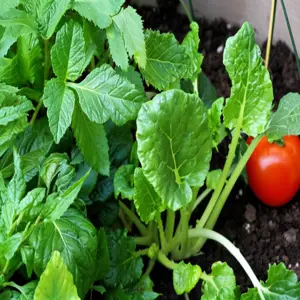
Improving Drainage
To enhance drainage, add a layer of gravel or broken pottery shards to the bottom of your containers. Consider using a French drain system around your ledge to further improve drainage and prevent water buildup, as discussed on this webpage pros and cons of french drain*. This is especially important if your ledge tends to accumulate standing water. You might also be interested in this article about “sharp sand for garden drainage.
Protecting Against Wind
If your ledge is exposed to strong winds, consider using a windbreak, such as a screen or trellis. You can also choose sturdier vegetable varieties that are less susceptible to wind damage. Ensure plants are securely anchored in their containers.
Top Vegetables for a Rainy Ledge
Here’s a curated list of vegetables that thrive in consistently moist conditions and are well-suited for container gardening on a rainy ledge:
1. Leafy Greens: Lettuce, Spinach, and Kale
Leafy greens are excellent choices for a rainy ledge because they tolerate shade and thrive in consistently moist soil. They are also relatively compact and easy to grow in containers. Here’s a closer look at each:
- Lettuce: Choose loose-leaf varieties like ‘Black Seeded Simpson’ or ‘Red Sails,’ which are quick to mature and can be harvested continuously.
- Spinach: ‘Bloomsdale Long Standing’ is a popular variety that is heat-tolerant and slow to bolt. Spinach prefers cooler temperatures and consistent moisture.
- Kale: ‘Dwarf Blue Curled’ and ‘Red Russian’ are compact varieties that are well-suited for container gardening. Kale is also highly nutritious and cold-hardy.
Growing Tips:
- Sow seeds directly into containers or start them indoors and transplant seedlings after a few weeks.
- Water regularly to keep the soil consistently moist but not waterlogged.
- Fertilize every 2-3 weeks with a balanced liquid fertilizer.
- Harvest leaves regularly to encourage continued growth.
2. Radishes
Radishes are fast-growing and thrive in cool, moist conditions, making them an ideal choice for a rainy ledge. They mature quickly, often in as little as 3-4 weeks.
Varieties to Consider:
- ‘Cherry Belle’: A classic red radish that is easy to grow.
- ‘French Breakfast’: An elongated radish with a mild flavor.
- ‘Easter Egg’: A mix of colorful radishes that add visual appeal to your garden.
Growing Tips:
- Sow seeds directly into containers, spacing them about 1 inch apart.
- Keep the soil consistently moist, as radishes need ample water to develop properly.
- Thin seedlings to about 2 inches apart once they emerge.
- Harvest radishes when they reach the desired size, typically about 1 inch in diameter.
3. Arugula
Arugula, also known as rocket, is a peppery green that thrives in cool, moist conditions. It’s easy to grow in containers and can be harvested continuously.
Growing Tips:
- Sow seeds directly into containers or start them indoors and transplant seedlings after a few weeks.
- Keep the soil consistently moist but not waterlogged.
- Harvest leaves regularly to encourage continued growth.
- Arugula can bolt (go to seed) in hot weather, so provide shade during the hottest part of the day.
4. Swiss Chard
Swiss chard is a hardy and productive vegetable that tolerates shade and thrives in moist soil. It’s also visually appealing, with colorful stems and leaves.
Varieties to Consider:
- ‘Bright Lights’: A mix of colorful Swiss chard varieties with red, yellow, and orange stems.
- ‘Fordhook Giant’: A large, productive variety with dark green leaves.
Growing Tips:
- Sow seeds directly into containers or start them indoors and transplant seedlings after a few weeks.
- Keep the soil consistently moist but not waterlogged.
- Fertilize every 2-3 weeks with a balanced liquid fertilizer.
- Harvest outer leaves as needed, leaving the inner leaves to continue growing.
5. Peas
Peas thrive in cool, moist conditions, making them a good choice for a rainy ledge. Bush varieties are best suited for container gardening.
Varieties to Consider:
- ‘Little Marvel’: A compact bush pea variety that produces sweet, tender peas.
- ‘Sugar Ann’: A bush snap pea variety that can be eaten pod and all.
Growing Tips:
- Sow seeds directly into containers, spacing them about 2 inches apart.
- Provide support for the pea plants to climb, such as a small trellis or stakes.
- Keep the soil consistently moist, especially during flowering and pod development.
- Harvest peas when the pods are plump and filled with peas.
6. Beets
Beets tolerate shade and thrive in moist soil, making them a good choice for a rainy ledge. Both the roots and the leaves are edible.
Varieties to Consider:
- ‘Detroit Dark Red’: A classic beet variety with deep red roots.
- ‘Golden’: A yellow beet variety with a milder flavor.
Growing Tips:
- Sow seeds directly into containers, spacing them about 2 inches apart.
- Thin seedlings to about 4 inches apart once they emerge.
- Keep the soil consistently moist, as beets need ample water to develop properly.
- Harvest beets when the roots reach the desired size, typically about 2-3 inches in diameter.
7. Carrots
While traditionally thought of as needing full sun, certain carrot varieties can tolerate partial shade, making them viable for a rainy ledge. Choose shorter varieties that are well-suited for containers.
Varieties to Consider:
- ‘Thumbelina’: A round, bite-sized carrot that is perfect for containers.
- ‘ Short and Sweet’: A short, sweet carrot that matures quickly.
Growing Tips:
- Sow seeds directly into containers, spacing them about 1 inch apart.
- Thin seedlings to about 2 inches apart once they emerge.
- Keep the soil consistently moist, as carrots need ample water to develop properly.
- Ensure the soil is loose and free of rocks to allow the carrots to grow straight.
- Harvest carrots when they reach the desired size, typically about 1-2 inches in diameter.
8. Herbs
Many herbs thrive in moist conditions and can be easily grown in containers on a rainy ledge. Here are a few excellent choices:
- Mint: Mint thrives in moist conditions and can be grown in containers to prevent it from spreading aggressively. Learn more about growing herbs indoors year round from this webpage – how to grow herbs indoors year round
- Parsley: Parsley prefers moist soil and partial shade.
- Chives: Chives are easy to grow and tolerate a wide range of conditions.
- Cilantro: Cilantro prefers cool, moist conditions and can bolt (go to seed) in hot weather. You might find this article interesting: why is my cilantro turning yellow?.
- Basil: While Basil loves sunlight, with proper care it can also thrive in a rainy ledge garden. Check out this article for basil winter care. You may be interested in how to grow basil in a mason jar from seeds too.
Growing Tips:
- Sow seeds directly into containers or start them indoors and transplant seedlings after a few weeks.
- Water regularly to keep the soil consistently moist but not waterlogged.
- Harvest leaves regularly to encourage continued growth.
- Pinch off flowers to prevent herbs from going to seed and becoming bitter.
9. Salad Greens Mix
Planting a mix of salad greens is a great way to have a variety of flavors and textures in your rainy ledge garden. Choose a mix of leafy greens, such as lettuce, spinach, arugula, and kale.
Growing Tips:
- Sow seeds directly into containers, scattering them evenly over the surface of the soil.
- Cover seeds lightly with soil and water gently.
- Harvest leaves when they are young and tender, about 2-3 inches long.
- Cut leaves with scissors, leaving the roots intact to allow the plants to regrow.
Table: Best Vegetables for a Rainy Ledge
| Vegetable | Sunlight Needs | Watering Needs | Container Size | Growing Tips |
|---|---|---|---|---|
| Lettuce | Partial Shade | Consistent Moisture | 6-inch pot | Harvest leaves regularly |
| Spinach | Partial Shade | Consistent Moisture | 6-inch pot | Keep soil cool |
| Kale | Partial Shade | Consistent Moisture | 8-inch pot | Harvest outer leaves |
| Radishes | Partial Shade | Consistent Moisture | 6-inch pot | Harvest quickly |
| Arugula | Partial Shade | Consistent Moisture | 6-inch pot | Provide shade in hot weather |
| Swiss Chard | Partial Shade | Consistent Moisture | 10-inch pot | Harvest outer leaves |
| Peas | Partial Shade | Consistent Moisture | 12-inch pot | Provide support for climbing |
| Beets | Partial Shade | Consistent Moisture | 8-inch pot | Thin seedlings |
| Carrots | Partial Shade | Consistent Moisture | 8-inch pot | Ensure loose soil |
| Mint | Partial Shade | Consistent Moisture | 6-inch pot | Control spreading |
| Parsley | Partial Shade | Consistent Moisture | 6-inch pot | Harvest stems |
| Chives | Partial Shade | Consistent Moisture | 6-inch pot | Easy to grow |
| Cilantro | Partial Shade | Consistent Moisture | 6-inch pot | Cooler conditions |
| Basil | Partial Shade | Consistent Moisture | 8-inch pot | Pinch off flowers |
Caring for Your Rainy Ledge Garden
Once your vegetables are planted, proper care is essential to ensure a successful harvest. Here are some key considerations:
Watering
Monitor the moisture levels in your containers regularly. Even though it’s a rainy ledge, the soil may still dry out, especially during windy or sunny periods. Water when the top inch of soil feels dry to the touch. Avoid overwatering, as this can lead to root rot. Ensure containers have adequate drainage holes.
Fertilizing
Vegetables grown in containers need regular fertilization to replenish nutrients that are leached out by frequent watering. Use a balanced liquid fertilizer every 2-3 weeks. Follow the instructions on the fertilizer label for proper application rates. You can find helpful tips on this page – how to choose fertilizer.
Pest and Disease Control
Monitor your vegetables regularly for signs of pests or diseases. Common pests include aphids, slugs, and snails. Diseases such as powdery mildew and fungal leaf spots can also occur in moist conditions. Take action promptly to prevent infestations from spreading. Use organic pest control methods such as insecticidal soap or neem oil. Ensure good air circulation to reduce the risk of fungal diseases.
Succession Planting
To ensure a continuous harvest, practice succession planting. This involves planting new seeds or seedlings every few weeks. This is especially useful for fast-growing vegetables like lettuce, radishes, and arugula. Succession planting will keep your rainy ledge garden productive throughout the growing season.
Crop Rotation
While crop rotation is more commonly associated with larger gardens, it can still be beneficial in container gardening. Avoid planting the same type of vegetable in the same container year after year. This helps prevent the buildup of soilborne pests and diseases. If you’re only growing a few different types of vegetables, you can rotate them among your containers each season.
Dealing with Excess Rain
While these vegetables thrive in moist conditions, excessive rain can still be a problem. Here are some tips for dealing with heavy rainfall:
- Elevate Containers: Raise your containers off the ledge slightly to improve drainage and prevent them from sitting in standing water.
- Cover Plants: During periods of prolonged heavy rain, cover your plants with a plastic sheet or tarp to protect them from excessive moisture.
- Improve Air Circulation: Ensure good air circulation around your plants to help them dry out quickly after rain. Prune away any overcrowded foliage to improve airflow.
- Monitor for Diseases: Keep a close eye on your plants for signs of fungal diseases, which are more likely to occur in wet conditions. Treat any affected plants promptly with an appropriate fungicide.
Adapting to Different Rainy Ledge Conditions
Not all rainy ledges are created equal. Some may be shadier than others, while some may be more exposed to wind and rain. Here’s how to adapt your gardening practices to different conditions:
Shady Ledges
If your ledge receives less than 4 hours of direct sunlight per day, focus on growing vegetables that tolerate shade, such as leafy greens, radishes, and herbs. You may also want to consider using grow lights to supplement the natural light. Learn more about choosing between “*grow light vs sad light*“.
Windy Ledges
If your ledge is exposed to strong winds, choose sturdy vegetable varieties that are less susceptible to wind damage. Provide windbreaks to protect your plants. Ensure containers are heavy enough to prevent them from being blown over.
Exposed Ledges
If your ledge is fully exposed to the elements, choose vegetables that are tolerant of both sun and rain. Provide adequate drainage to prevent waterlogging. Monitor the moisture levels in your containers regularly and water as needed.
Expanding Your Rainy Ledge Garden
Once you’ve mastered the basics of growing vegetables on a rainy ledge, you can expand your garden by trying new varieties and techniques. Here are a few ideas:
Vertical Gardening
Maximize your space by growing vegetables vertically. Use trellises, hanging baskets, or stacked planters to create a vertical garden. This is especially useful for growing climbing vegetables like peas and beans.
Companion Planting
Companion planting involves growing different vegetables together that benefit each other. For example, basil can repel pests that attack tomatoes, while carrots can deter onion flies. Research companion planting combinations to create a more productive and pest-resistant garden. You might also be interested in the question, can you plant lemon balm and cilantro together? or what herbs can be planted together?.
Succession Sowing
Planting a few seeds every week or two will ensure that you have a constant supply of fresh vegetables. Succession sowing is especially useful for leafy greens and radishes, which mature quickly. This way, you’ll always have something to harvest, and you won’t be overwhelmed with a huge harvest all at once.

Extending the Growing Season
Use row covers or cold frames to protect your vegetables from frost and extend the growing season. These structures create a microclimate that is warmer and more sheltered than the surrounding environment. You can also grow vegetables indoors during the winter months using grow lights.
Troubleshooting Common Problems
Even with the best planning, you may encounter some challenges when growing vegetables on a rainy ledge. Here are some common problems and how to solve them:
- Yellowing Leaves: This can be caused by overwatering, nutrient deficiencies, or pests. Check the soil moisture levels and adjust your watering schedule accordingly. Fertilize with a balanced liquid fertilizer. Inspect plants for pests and treat as needed. You may find this article helpful: Leaves Turning Yellow on Peace Lily
- Stunted Growth: This can be caused by insufficient sunlight, poor soil, or rootbound plants. Ensure plants are receiving adequate sunlight. Repot plants into larger containers with fresh potting mix.
- Pest Infestations: Common pests include aphids, slugs, and snails. Use organic pest control methods such as insecticidal soap or neem oil. Handpick pests off plants.
- Fungal Diseases: Powdery mildew and fungal leaf spots can occur in moist conditions. Ensure good air circulation around plants. Treat affected plants with an appropriate fungicide.
- Root Rot: This is caused by overwatering and poor drainage. Ensure containers have adequate drainage holes. Avoid overwatering. Repot plants into fresh potting mix.
The Joys of Rainy Ledge Gardening
Growing vegetables on a rainy ledge can be a rewarding experience. Not only will you have access to fresh, homegrown produce, but you’ll also enjoy the therapeutic benefits of gardening. Even a small container garden can provide a sense of accomplishment and connection to nature. Plus, you’ll be reducing your carbon footprint by growing your own food.
So, don’t let a rainy ledge deter you from pursuing your gardening dreams. With the right vegetables, proper preparation, and consistent care, you can create a thriving garden that brings joy and sustenance to your life. Get started today and experience the joys of rainy ledge gardening!
Resources for Further Learning
Here are some additional resources to help you on your rainy ledge gardening journey:
- Local gardening clubs and societies
- University extension services
- Online gardening forums and communities
- Gardening books and magazines
By taking advantage of these resources, you can continue to learn and grow as a gardener. Happy gardening!
FAQ
Here are some frequently asked questions about growing vegetables on a rainy ledge:
Q1: What vegetables are best suited for a rainy ledge?
A1: Leafy greens like lettuce, spinach, and kale are excellent choices, as are radishes, arugula, Swiss chard, peas, beets, and certain herbs like mint, parsley, and chives. These vegetables generally tolerate moist conditions and partial shade.
Q2: How much sunlight do vegetables on a rainy ledge need?
A2: While many of the recommended vegetables tolerate partial shade, aim for at least 4-6 hours of sunlight per day. If your ledge is very shady, consider using grow lights to supplement natural light.
Q3: How often should I water my rainy ledge vegetable garden?
A3: Monitor the soil moisture levels regularly. Water when the top inch of soil feels dry to the touch. Even though it’s a rainy ledge, the soil may still dry out, especially during windy or sunny periods. Avoid overwatering to prevent root rot. You might find this article interesting: “How Often to Water Monstera Deliciosa?”
Q4: What type of soil should I use for my rainy ledge garden?
A4: Use a high-quality potting mix designed for container gardening. This type of soil is lightweight, well-draining, and contains essential nutrients. Avoid using garden soil, as it can become compacted and impede drainage in containers. Consider using the best soil for pothos as a starting point.
Q5: How can I improve drainage in my containers?
A5: Add a layer of gravel or broken pottery shards to the bottom of your containers to improve drainage. Ensure your containers have adequate drainage holes. Consider using self-watering containers to regulate moisture levels. A French drain system could also be beneficial, as detailed here: Swale vs French Drain.
Q6: How can I protect my plants from wind on a rainy ledge?
A6: Use a windbreak, such as a screen or trellis, to protect your plants from strong winds. Choose sturdier vegetable varieties that are less susceptible to wind damage. Ensure plants are securely anchored in their containers.
Q7: How often should I fertilize my vegetables on a rainy ledge?
A7: Fertilize every 2-3 weeks with a balanced liquid fertilizer. Follow the instructions on the fertilizer label for proper application rates. Be sure to see: Best Homemade Liquid Fertilizer for Indoor Plants.”
Q8: What are some common pests and diseases that affect vegetables on a rainy ledge?
A8: Common pests include aphids, slugs, and snails. Diseases such as powdery mildew and fungal leaf spots can also occur in moist conditions. Take action promptly to prevent infestations from spreading. Use organic pest control methods such as insecticidal soap or neem oil. Ensure good air circulation to reduce the risk of fungal diseases. If you have gnats you may want to read this webpage- How To Get Rid Of Gnats In Indoor Plants.
Q9: How can I ensure a continuous harvest from my rainy ledge garden?
A9: Practice succession planting by planting new seeds or seedlings every few weeks. This is especially useful for fast-growing vegetables like lettuce, radishes, and arugula. It’s also important to know sow vs plant.
Q10: What can I do if my vegetable plants are turning yellow?
A10: Yellowing leaves can be caused by overwatering, nutrient deficiencies, or pests. Check the soil moisture levels and adjust your watering schedule accordingly. Fertilize with a balanced liquid fertilizer. Inspect plants for pests and treat as needed.
Q11: Can I grow tomatoes on a rainy ledge?
A11: While tomatoes generally prefer full sun, some determinate (bush) varieties can tolerate partial shade. Ensure good air circulation and well-draining soil to prevent fungal diseases. Provide support for the plants as they grow. You may find the question, “Accidentally Cut Top of Tomato Plant” helpful if that happens.
Q12: Is it possible to have an apartment garden without a balcony?
A12: Yes, it’s absolutely possible! Many people successfully garden indoors using windowsills, shelves, or even with the help of grow lights. With the right plants and care, you can create a thriving indoor garden even without a balcony. This article may be of use to you – Gardening In An Apartment Without A Balcony.
Conclusion
Cultivating a vegetable garden on a rainy ledge presents unique opportunities and challenges, but with the right knowledge and dedication, a thriving green space is entirely achievable. By selecting vegetables that thrive in consistently moist conditions and are tolerant of partial shade, you can transform your ledge into a productive and aesthetically pleasing garden. Careful attention to soil preparation, drainage, watering, and pest control are crucial for success.
Remember to adapt your gardening practices to the specific conditions of your ledge, whether it’s particularly shady, windy, or exposed. Consider vertical gardening techniques and companion planting to maximize space and improve plant health. Succession planting will ensure a continuous harvest throughout the growing season, providing you with a steady supply of fresh, homegrown produce.
Embrace the joys of rainy ledge gardening and appreciate the therapeutic benefits it offers. Even a small container garden can bring a sense of accomplishment and connection to nature, while also reducing your environmental footprint. Don’t be discouraged by occasional setbacks or challenges; gardening is a learning process, and each season brings new opportunities for growth and improvement. From considering the appropriate lighting to managing moisture levels, every detail counts towards the success of your garden. So grab your gardening tools, select your favorite seeds, and embark on a rewarding journey of creating a vibrant and productive vegetable garden on your rainy ledge.
As you nurture your plants, you’ll not only enjoy the fresh flavors of homegrown vegetables but also the satisfaction of knowing that you’ve created a sustainable and beautiful space in the heart of your home. The journey of transforming a simple ledge into a lush garden is a testament to the resilience of nature and the rewarding connection we can have with it, no matter the constraints of our urban environments. So get out there, get your hands dirty, and watch your rainy ledge come alive!
Auto Amazon Links: No products found.
Wilt-Pruf® Christmas Tree/Cutting Preserver Spray |Preserves Christmas Trees, Wreaths, Garlands, Cuttings and Carved Pumpkins | Reduces Needle Drop | Keeps Cut Trees Fresh Longer | Natural (32 oz)
$21.99 (as of November 15, 2025 21:46 GMT +00:00 - More info- Product prices and availability are accurate as of the date/time indicated and are subject to change. Any price and availability information displayed on [relevant Amazon Site(s), as applicable] at the time of purchase will apply to the purchase of this product.
Perfect Plants Christmas Tree Saver 8oz. | Easy Use Xmas Tree Preserver Food | Have Healthy Green Christmas Trees All Holiday Season
$13.99 (as of November 15, 2025 21:46 GMT +00:00 - More info- Product prices and availability are accurate as of the date/time indicated and are subject to change. Any price and availability information displayed on [relevant Amazon Site(s), as applicable] at the time of purchase will apply to the purchase of this product.
HoHoHoH2o Automatic Christmas Tree Watering System Device, Santa’s Tree Helper Keeps Your Christmas Tree Healthy and Fresh, Refillable 2.5 gallons Capacity Box - Silver/Festive
$99.95 (as of November 15, 2025 21:46 GMT +00:00 - More info- Product prices and availability are accurate as of the date/time indicated and are subject to change. Any price and availability information displayed on [relevant Amazon Site(s), as applicable] at the time of purchase will apply to the purchase of this product.
Christmas Tree Watering Funnel – 39 Inch Adjustable 3-Section Design, Reusable & Spill-Free, Easy Watering for Real Christmas Trees
$17.99 (as of November 15, 2025 21:46 GMT +00:00 - More info- Product prices and availability are accurate as of the date/time indicated and are subject to change. Any price and availability information displayed on [relevant Amazon Site(s), as applicable] at the time of purchase will apply to the purchase of this product.
4-Pack Tree Watering Ring, Tree Watering Bags Slow Release 20 Gallon, Tree Bags for Watering for Slow Drip 6 to 9 Hours, Low-Profile Watering Bags for New Trees, Multi-Trunk Trees and Shrubs
$47.99 (as of November 15, 2025 21:46 GMT +00:00 - More info- Product prices and availability are accurate as of the date/time indicated and are subject to change. Any price and availability information displayed on [relevant Amazon Site(s), as applicable] at the time of purchase will apply to the purchase of this product.
Zevo Flying Insect Trap & 3 Refill Cartridges - Plug in Fly Trap & Indoor Bug Catcher for Gnats, House & Fruit Flies - Blue & UV Light Technology, Mess-Free Alternative to Bug Zapper
$25.96 (as of November 15, 2025 08:34 GMT +00:00 - More info- Product prices and availability are accurate as of the date/time indicated and are subject to change. Any price and availability information displayed on [relevant Amazon Site(s), as applicable] at the time of purchase will apply to the purchase of this product.
Zevo Flying Insect Trap Official Refill Cartridges - Fits Both Zevo Trap & MAX Indoor Fly Trap - Authentic Trap+Lock Technology to Catch Gnats, House & Fruit Flys (4 Official Refill Cartridges)
$14.97 (as of November 15, 2025 08:34 GMT +00:00 - More info- Product prices and availability are accurate as of the date/time indicated and are subject to change. Any price and availability information displayed on [relevant Amazon Site(s), as applicable] at the time of purchase will apply to the purchase of this product.
TERRO Fruit Fly Traps for Indoors (4 Pack) + 180 Days of Lure Supply
$10.95 (as of November 15, 2025 08:34 GMT +00:00 - More info- Product prices and availability are accurate as of the date/time indicated and are subject to change. Any price and availability information displayed on [relevant Amazon Site(s), as applicable] at the time of purchase will apply to the purchase of this product.
TERRO Ant Killer Bait Stations T300B - Liquid Bait to Eliminate Ants - Bait System - 12 Count Stations for Effective Indoor Ant Control
$11.44 (as of November 15, 2025 08:34 GMT +00:00 - More info- Product prices and availability are accurate as of the date/time indicated and are subject to change. Any price and availability information displayed on [relevant Amazon Site(s), as applicable] at the time of purchase will apply to the purchase of this product.
Advion Cockroach Gel Bait, 4 Tubes x 30-Grams, 1 Plunger and 2 Tips, German Roach Insect Pest Control, Indoor and Outdoor Use, Roach Killer Gel for American, German and Other Major Cockroach Species
$26.99 (as of November 15, 2025 08:34 GMT +00:00 - More info- Product prices and availability are accurate as of the date/time indicated and are subject to change. Any price and availability information displayed on [relevant Amazon Site(s), as applicable] at the time of purchase will apply to the purchase of this product.
